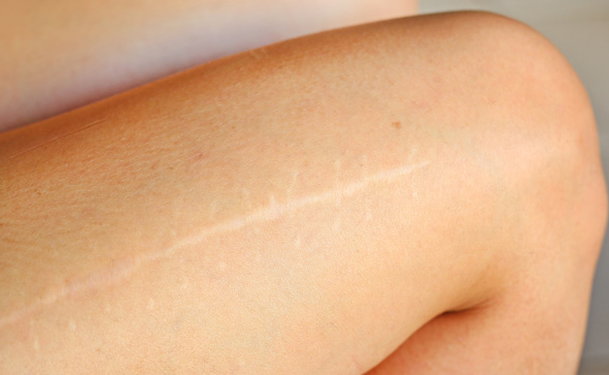Scarring can occur when a mark is left after the healing of a wound or after an injury to the skin’s surface, maybe by a burn or sometimes from a medical procedure. A scar is a biological repair of the body’s tissues and skin, and is a natural healing process. There are typically three types of scars:
- Atrophic: These are deep scars that seem to have a hole in them.
- Hypertrophic: These scars appear like keloidal scars, but do not spread to the other tissues, and normally go away eventually.
- Keloidal: Keloidal scars are raised red nodules that spread to the other surrounding tissues.
Myth: A Scar from a Pimple Is Not Permanent
Fact: A scar from a pimple may sometimes be temporary, but may become permanent. This is especially the case if one squeezes a pimple to get rid of it. Not only can this popping method spread bacteria and worsen the acne skin condition, but it can lead to permanent scarring.
Myth: Plastic Surgery Does Not Involve Scarring
Fact: Plastic surgery does involve scarring, as there is still the cutting of tissues. The difference is that this cutting and sometimes scarring is in a concealed area of the skin or body. This hidden scar that is usually a fine line may be hidden along the hairline or inside the nose, in the creases of an eyelid, or behind the ears. Finer needles and techniques are used for minimal scarring.
Myth: All Acne Scars Should Be Treated by a Dermatologist
Fact: Not all acne scars need to be treated by a dermatologist. Mild acne scars can sometimes be treated at home with natural remedies such as apple cider vinegar, Aloe Vera, lavender oil, sandalwood paste, tomato slices, egg whites, olive oil, lime juice and more. It is recommended to seek attention from a dermatologist if the acne scar is deep or if a severe infection may be present, as a permanent scar could form.
Myth: Vitamin E Should Be Applied Immediately on a Wound
Fact: Vitamin E cream or oil has been known to penetrate the layers of the skin to minimize free radicals that could interfere with healing, but applying the cream or oil too soon after a cosmetic procedure or surgery or when the wound is fresh, could prevent it from healing properly on its own. Most physicians recommend to wait at least two weeks before applying this type of cream to the wound.
Myth: Scars Cannot Be Removed
Fact: A scar can take 12 to 18 months to form completely, and can take as long as 24 months to disappear. If scars do not go away, a dermatologist or cosmetic surgeon may be able to assist. Many scars can be removed by lasers or surgery.
Myth: A Red Scar Is an Indication of a Permanent Scar
Fact: A red scar on a wound from a cosmetic or surgical procedure is the result of new blood vessels forming at the site of the skin injury to form new cells. This redness is a normal indication of healing. If there is heat and/or inflammation around the area of injury, then this may be an infection and may be more than temporary scarring.



